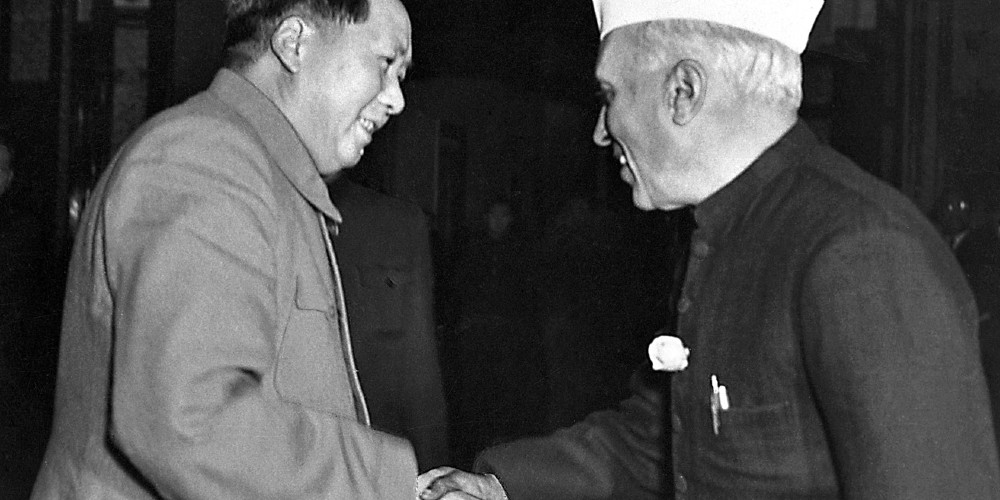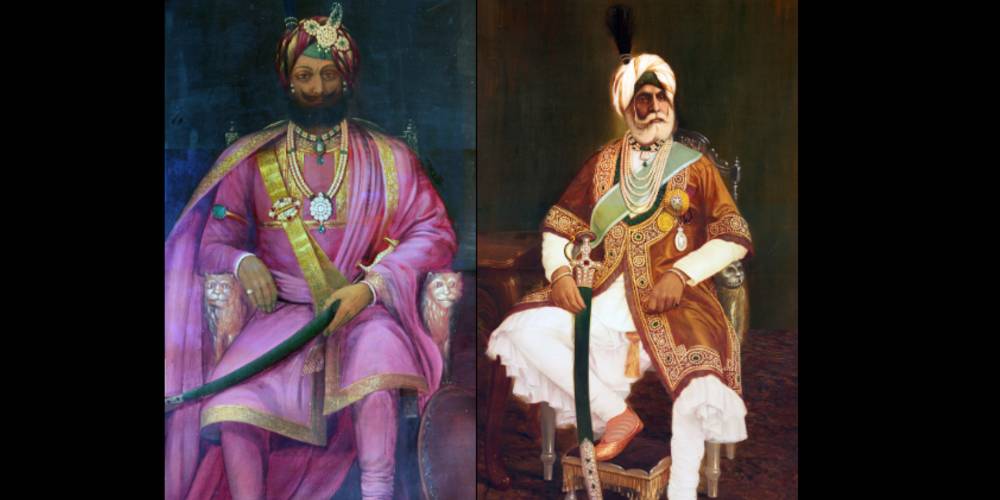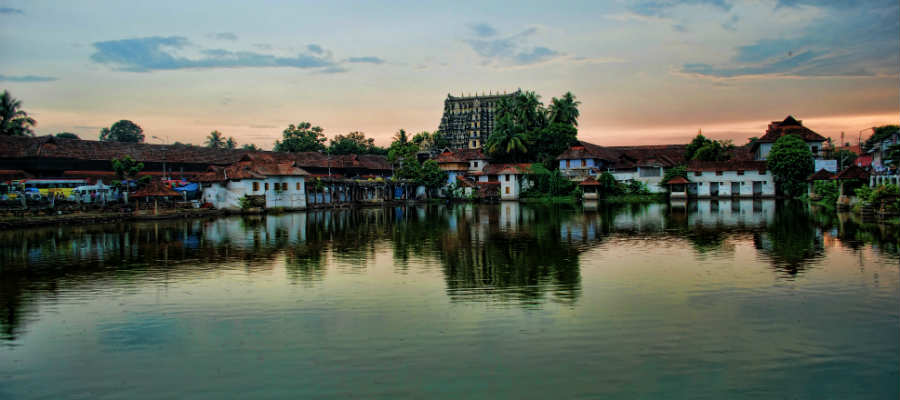BY RSN SINGH
For those who watched the oath taking ceremony in the Lok Sabha recently, there was some great learning to ponder. The lesson questions the very basis of politics of linguistic chauvinism, and in the larger perspective the hackneyed ‘unity in diversity’ argument. If one were to intently hear the oath uttered by different Members, there was no feeling of any primal difference in Hindi, Bengali, Gurumukhi, Gujarati, Punjabi, Malayalam, Maithli, and the mother of all these languages Sanskrit. There were members, who opted for the Urdu language, which to the ears and sensibilities was nothing but Hindi. Urdu language acquires sectarian and communal colours only when some people insist on Arabic script as the medium of its propagation.
If there were to be no basic unity in the syllables, phonetics and common perceptive attributes of various Indian languages, India’s soft power would not have made such formidable and benign in-roads and influence in most parts of Asia and Africa. The reach and subtle influence of Indian civilization is generally underestimated. Be it Afghanistan, Pakistan, Bangladesh, Sri Lanka, the Middle East or in an African country like Morocco, Indian films and popular music hold sway. It has much to do with some basic similarities in the inner cognitive mould, which is a product of historical processes and influences. Other appreciable external influences notwithstanding, different folk, religious or classical music across India have one common root, i.e. the Samveda.
I remember, reading an article in one of the English magazines published in India, wherein the author described his ‘gastronomical journey’ on the train that originates at Jammu and terminates in Kerala. He described how the ‘dal’ served at Jammu became thicker as the train entered Punjab and then gradually acquired different flavours along the route till it became ‘sambhar’ in the South. Nevertheless, it remained basically ‘dal’. The same was the case with ‘fulka’ or ‘chapati’ or ‘roti’ as he traveled from North to South. The basic nature of the bread however was the same. This is unity and not diversity.
From Manipur to Kerala and Odisha to Gujarat, the woman folk in India wear ‘saaris’. There are variations in lengths, style and colour patterns, nevertheless they remain ‘saari’. The same is the case with ‘dhoti’. In this regard, India as a whole retains strong link with its past. John Keay in his book “India: A History” on page 276 says,
“For the tag of ‘the greatest medieval traveler’ Ibn Batuta’s only rival was Marco Polo. Arriving at India’s opposite extremity when he called at one of the Tamil ports en route from China in c1290, Marco Polo tells of trying to have a coat made. To his surprise he found that in peninsular India there was no tailor or seamstresses. In fact there was very little clothing at all, and what there was neither cut nor sewn. A single length of cloth was simply tied or wrapped about the person, a custom which still survives in the wearing of the sari, the shawl, the lunghi and the dhoti.”
This is an evidence of India’s depth and continuity of historical and cultural unity.
In her book “India: A Sacred Geography”, Diana L. Eck writes, “I have traveled thousands of miles on the pilgrim tracks of this wider sacred geography, trying to understand from the ground up the ways in which India has been composed through the centuries as sacred landscape. I took careful notes of the duplication of sacred places, the networks of sacred rivers, the systemizing of lingas of light, the proliferation of seats of Goddess. I visited the headwaters of four of the seven sacred rivers – the Ganga, the Narmada, the Godavari, and the Kaveri. I traveled down the Western Ghats, along the narrow stretch of land between the mountains and the sea called Parsashurama Kshetra, the land said to have been retrieved from the sea by one of the avataras of Vishnu, Parashurama. I discovered time and again how intricately and elaborately storied each part of the land of India really is. I sought out the places associated with Krishna’s life and lore – from the birthplace of Krishna in Mathura to the place he is said to have died in peninsular Gujarat. I came upon countless places said to have been visited by the heroes of Mahabharata as they roamed the forests of ancient India in exile, or by Rama, Sita and Lakshmana in the forest journey described in Ramayana. It became increasingly clear to me that anywhere one goes in India, one finds a living landscape in which mountains, rivers, forests and villages are elaborately linked to the stories of the gods and heroes… What is clear from the study of ‘India’ is that its geographical features – its rivers, mountains, hills and coastlines – no matter how precisely rendered, mapped, or measured, are also charged with stories of gods and heroes. It is a resonant, sacred geography. But it is also a landscape in that these features are connected link to a wider whole.”
No other country, therefore has geographical unity steeped in religion as India.
The Indian epic Ramayana’s description of Indian geography is remarkably accurate. Each event in the epic is intertwined with a particular place on the Indian map and with local legends. What lends further credibility is the fact that Valmiki, the author of Ramayana, did not travel with Ram and therefore could not have conjured the events, the local legends and geography associated with it. Such convergence of events, legends, geography and history with archaeology is unique. The Ramayana was validated by Ram himself, when his sons narrated it to him. In the description of Bharat’s return from his maternal grandfather’s kingdom, ‘Kekeya’ (now in Pakistan), the sequence of rivers that he crosses, is in accurate conformity with the contemporary geography.
The British committed the biggest fraud on India by appointing James Mills and Charles Grant to write the history of India in 1808. In turn, these two frauds trashed most of the historical facts, like Ramayana as fabricated and wrote India’s history without even visiting the country.
The most diabolical attack on India’s cultural unity was by Lord Minto, who in 1906 encouraged the Aga Khan to submit a proposal for ‘separate electorate’ for Muslims. Durga Das in his book ‘India from Curzon to Nehru and After’ on page 50 writes, “On him (Aga Khan) had been conferred the status of ‘leader of the Muslims in India’”. Durga Das does not fail to point out that on independence Aga Khan forswore Indian citizenship even as 50 million of his co-religionists remained in the country after Pakistan had been created. Minto in accepting Aga Khan’s demands with alacrity, tried to drive a wedge in Hindi-Muslim unity by describing the Muslims of India as ‘the descendants of conquering and ruling race’. Durga Das reminds that ‘majority of Indian Muslims are converts from Hinduism and not descendants from Turks, Persians, Pathans or Mughals’.
The conspiracy by Lord Minto is best described by Arun Shourie in his book ‘Missionaries of India’ on page 196. He quotes an article by Lady Minto on Aga Khan’s demand for separate electorate, wherein she wrote: “This has been a very eventful day; as someone said to me, ‘an epoch in Indian History’. … A very big thing has happened today, a work of statesmanship that will affect India and Indian history for many a long year. It is nothing less than the pulling back of 62 millions of people from joining the ranks of the seditious opposition.”
Another attack on India’s cultural unity was through the vector of ‘census’. Again, Arun Shourie further quotes M.Macauliffe’s lecture on the ‘Sikh Religion and its Advantages to the State’ in 1903: “At former (census) enumerations village Sikhs in their ignorance generally recorded themselves as Hindus, as indeed they virtually were. With the experienced gained by time, a sharp line of demarcation has now been drawn between Sikhs and Hindus…”. He further states that apart from census demarcations, ceremonies to instill and widen feelings of separateness amongst Sikhs in the Army were deliberately introduced.
There is hardly any caste that has not ruled India or parts of it. The Nanda dynasty that presided over the biggest empire of India for nearly 25 years (345BC-321BC) belonged to the lowest strata of the society. The Mauryan dynasty that succeeded and presided over even a larger empire for 132 years, as per many historians, was of the same social extraction. John Keay in his book “India: A History” on page 145 says that Fa Hian, the Buddhist pilgrim, who visited India around 400 AD found no caste except one that was treated as outcaste (because of its occupation of disposing of dead), “no other section of the population were notably disadvantaged, no other caste distinction attracted comments from the Chinese pilgrim, and no oppressive caste system drew fourth his surprised censure. Peace and order prevailed.” On page 189, he further mentions: “Kings of sudra or brahman origin, like those of Sindh, were as common as those whose forebears were, or pretended to be, of the supposedly royal and martial kastriya varna. He maintains that “caste assumed its passive and static connotations only after the Muslim conquest, when religious discrimination and oppressive taxations conspired to remove opportunities for political participation and economic advancement”.
A.L. Basham, the great Australian historian, in his book “The Wonder that was India” on page 9 says: “… in no other part of the ancient world, the relation of man and man, and of man and the state, so fair and humane. In no other early civilization were slaves so few in number and in no other ancient law book are their rights so well protected as in the Arthasastra (p. 152f)”. With regard to women emancipation, it is because of the Indian influence that Sri Lanka had the first woman prime minister of the world by way of Sirimavo Bandaranaike. But for the same influence Benazir Bhutto, Sheikh Hasina and Khaleda Zia would have been unthinkable as prime ministers in most non-regional Islamic countries.
India’s linguistic unity has been under attack first by the British and then by the vested interests that they left behind in India. Some media forums were rather quick to debate the desirability of the new Indian Prime Minister in conducting diplomacy in ‘Hindi’. There are some shameless bunch of Indians, who at every seminar or lecture never fail to proudly proclaim “my Hindi is not so good”. It is another matter that their English is even worse. This author has heard a talk by the renowned Urdu poet ‘Firaq Gorakhpuri’ (a professor of English as well), wherein he said that the first professor of English was appointed not in Britain but India. Till not very long ago, English was considered a vernacular in Britain. Even the great poet Milton (1608-1674) studied Latin at Cambridge. Only those British were considered literate, who knew Greek or Latin. By those standards in Milton’s period only five percent of Britain was literate.
The results of the recent elections have been unique in many ways. It has made a considerable shift from the past in cutting across caste and religious lines. This could not have been possible, if there was no innate psychological unity amongst Indians, which had become victim of subversion by political crooks and manipulators. They are worse than the English masters.
The purpose of this article is to underscore the tremendous religious (not in the narrow political sense), linguistic, cultural, historical and geographical unity that India has. In fact, its very geography lends its name to an Ocean. It is the geography, which includes the sacred geography of India that has preserved the continuity of civilization and nationhood. Very few nation-states can boast of such unity. Therefore all this business of ‘unity in diversity’ is humbug. The person who coined this phrase deserves to be consigned to the dustbin of history.
(RSN Singh is a former military intelligence officer who later served in the Research & Analysis Wing. The author of two books: Asian Strategic and Military Perspective and Military Factor in Pakistan, he is also a Guest Blogger with Canary Trap. The opinions expressed by the author and those providing comments are theirs alone, and do not reflect the opinions of Canary Trap or any employee thereof)



8 Comments
Thank you sir for this extremely riveting article..our heritage..our pride..is what needs to be revived and brought to everyones’ notice. Your article has done an amazing job of it.
Please keep up the good work. Wish leading dailies were to publish this on the front page.
My Dear RSN Singh, You have done great service by putting this article out. I would like to do some research along with you on the Sanskratik heritage of India and how we bring this to our new generatuion, but even more important to debug all the so called intellectuals who consider everything Indian and particularly ancient Indian as rubbish. They need to be de abused, and the national pride brought centre stage
Niranjan Malik
Dear RSN,
I have always been an admirer of your pen. However, the above article is simply outstanding. All the facts have been so very aptly put across.
All the best,
Maj Gen Mrinal Suman
Just as “Dal” and “Phulka” change as you travel from North to South, so are the faces of Hindu Gods. As you move on this journey, you will notice that the Gods’ Idols change to resemble the locals. You will also notice that the same Gods look pretty much localised in North and South Indian temples co-located anywhere.
Very interesting and well articulated.
A well researched article which has canvas as vast our history itself. You have rendered a great service to all of us Indians, not just Hindus, by bringing out certain cultural aspects which remain unchanged irrespective of where you are. Let it not sadden those cast in Macaulay’s mould but instead they may introspect and acknowledge their true heritage. Let us have a look at Indonesia where every one, irrespective of religious denomination, respects its cultural heritage with pride.
There is reason to rejoice that our unity is magnanimous enough to accommodate diversity.
A well researched document for motivational and inspirational purpose. Our ancient glorious past is well known and has been very clearly narrated. However, the present a consequence of centuries of enslavement by the Moghuls and the British,.is quite the opposite. We are a deeply divided Nation both vertically and horizontally in to small boxes trying to work for our narrow ends at the cost of the nation. We must accept ground realities and work hard at all levels- social,economic, cultural,religious and political- to fortify Nationalism and patriotism rising above our narrow group and individual interests promoting commonalities and convergence. For a start we need to focus on character building and value systems through enlightened education system.
The fable of India’s “diversity” was an attempt to dismantle India. Essentially, India had coalesced thousands of years before Ashoka drove the Vedas, Guru Kulas and the Brahma Suthras under ground in revenge for being declared an out caste. I coalesced out of the non-proselytizing Aryans imposing their laws on a multitiude of cultures and religions who began to imitate certain aspects of Aryan culture and learnt Sanskrit to communicated with them. Adi Shankara resuscitated all that Ashoka had dismantled but never succeeded in destroying. Post 1947 India seems more successful in demolishing traditional culture by dismantling and persecuting the roots, Brahmanism.